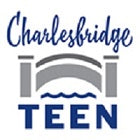Faraway Worlds

Paul Halpern, author
Paul Halpern, Ph.D., is the author of books on space, time, and the structure of the universe. A Fulbright Scholar, Paul is Professor of Physics at the University of the Sciences in Philadelphia. He lives in Wynnewood, Pennsylvania.
Read more about Paul.
Lynette R. Cook, illustrator
Lynette R. Cook is one of the world’s foremost painters of extrasolar planets. Her work has appeared in numerous books, magazines, and exhibits. Lynette lives in Daly City, California.
Read more about Lynette.
- IRA/CBC Children's Choices
Booklist
In 1995 the wobble of a distant star led astronomers to deduce the existence of a planet beyond our solar system. Presenting the story of extrasolar planets in a relatively short, clearly written text, Halpern discusses how scientists identify and study these planets and in what ways they resemble those already known. Made with computers, colored pencils, and acrylics, Cook's striking artwork creates clear images of our own solar system and richly colored imaginative scenes of worlds never seen. The last page includes a brief glossary and index as well as two suggested Web sites. A good addition to astronomy collections, this is an intriguing topic about which little has been published for children.
Sky & Telescope
Explaining how astronomers find extrasolar planets is not an easy task, especially if your audience consists of young children. In this new book, aimed at students 9 to 12 years old, physicist Paul Halpern and artist Lynette R. Cook do an admirable job explaining how planet hunters like Geoffrey W. Marcy use the radial-velocity (Doppler) method to find alien worlds. Minor technical errors notwithstanding, colorful illustrations help children understand complex scientific concepts. But the pictures also enable readers to imagine what these planets might look like if we could travel there and view them up close.
Mercury
Cutting edge science for young readers, Faraway Worlds encounters wobbling stars, frozen moons, and boiling oceans. Halpern's simple terms and clear explanations show how planet hunters like Geoffrey Marcy use the radial-velocity (Doppler) method to find alien worlds. Cook's striking artwork--made with computers, colored pencils, and acrylics--creates clear images of our own solar system and richly colored imaginative scenes of worlds never seen.
Bristol Herald Courier
Faraway Worlds: Planets Beyond Our Solar System begins with the premise of imagining a world beyond our solar system with three and a half day-long years and temperatures up to 2,000 degrees. The author goes on to say that astronomers continually search the sky to find alien planets like this-or that might even be capable of sustaining Earth-like life. The process of finding such planets is very difficult: planets are smaller than stars, and not as bright. Looking for wobbling stars is one way to track down these planets; stars wobble because of the gravitational pull of their planets. Halpern explains the Doppler Effect, or the changes of light or sound when it is given off by an object moving toward or away from an observer. This is how scientists can tell when a star is wobbling.
Actual planets that have been discovered beyond our solar system are mentioned and depicted. Art spans every page of this book, with the text written over the top. Lynette R. Cook is an astronomical illustrator who was asked by the California and Carnegie Planet Search team to paint a real planet they had discovered, in order to allow others an idea of what it might look like. She has done similar work in this book, using both her scientific knowledge and her artistic expertise to help readers imagine how these different worlds might appear. Possible space crafts and the like are also shown: a space colony hovering in the clouds of a gaseous planet, a spaceship with solar sails moving toward an Earth-like planet, and a research station perched above sodium clouds. Halpern describes various scenarios: a planet with an oval orbit around its sun and extreme climates as a result (boiling oceans when the planet is closer to the sun, and frozen oceans when it is farther away); a planet with poisonous chemicals in its atmosphere (astronomers can actually study a planet's atmosphere by breaking down starlight into its basic colors); and planets made of gas, like Jupiter. At the back of the book, Halpern charts the stats of different planets and provides a brief glossary, index, and list of websites to visit.
Lots of terrific information and great for beginning astronomers!
Beacon News
Astronomy buffs young and old will be fascinated by the wealth of information provided in Faraway Worlds. With simple terms and clear explanations, readers discover how today's astronomers are hunting for planets and solar systems beyond our own. Written and illustrated by Paul Halpern and Lynette R. Cook, Faraway Worlds is cutting-edge science for young readers.
Paperback
ISBN: 978-1-57091-617-5
E-book PDF
ISBN: 978-1-60734-238-0
Ages: 7-10
Page count: 32
8 1/2 x 11





